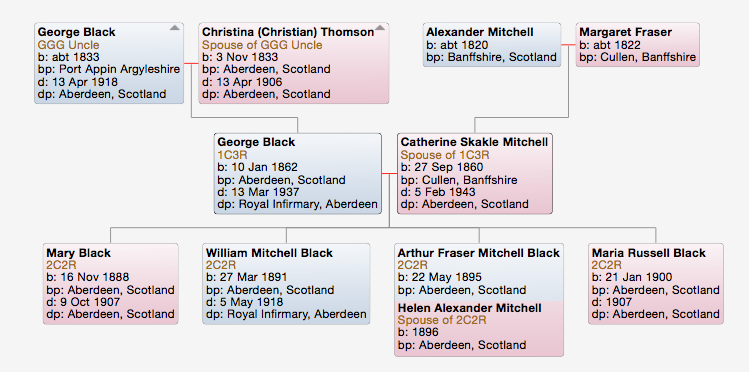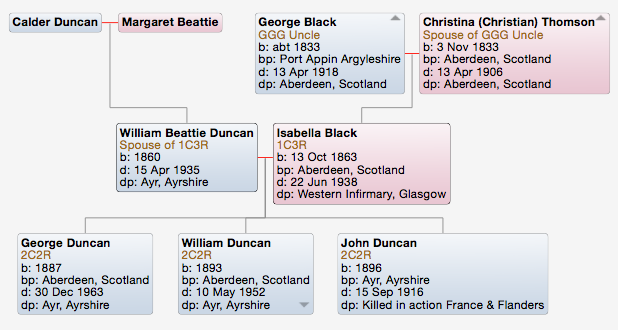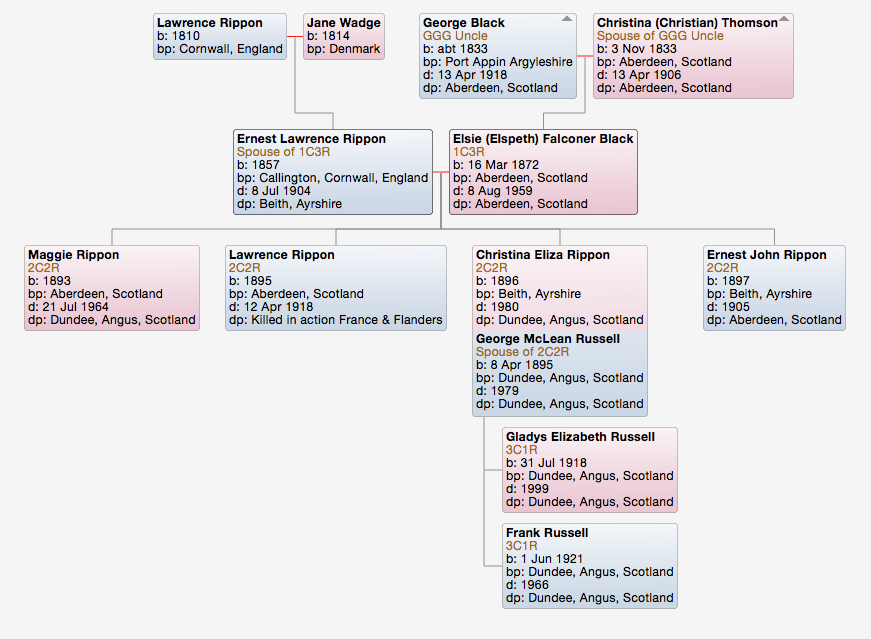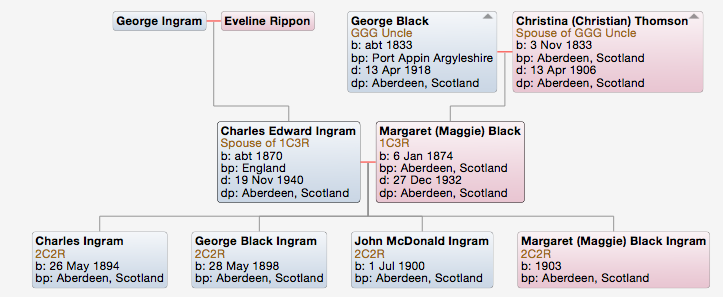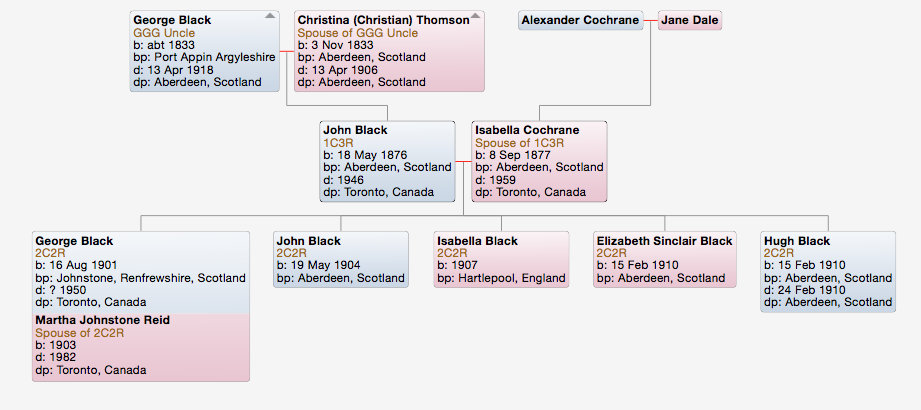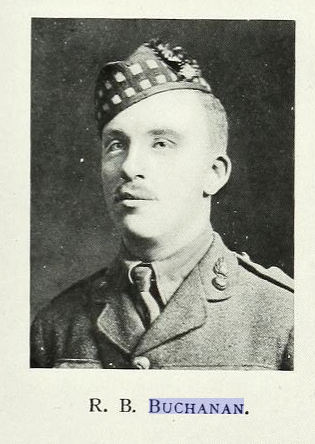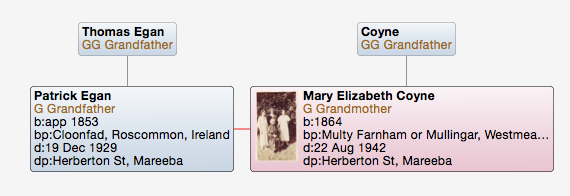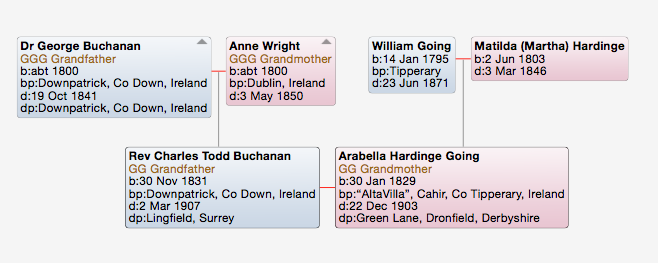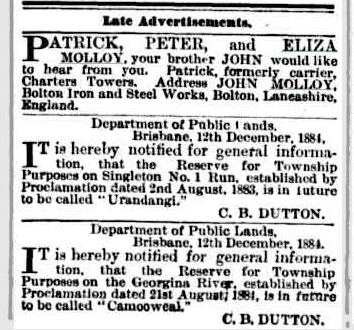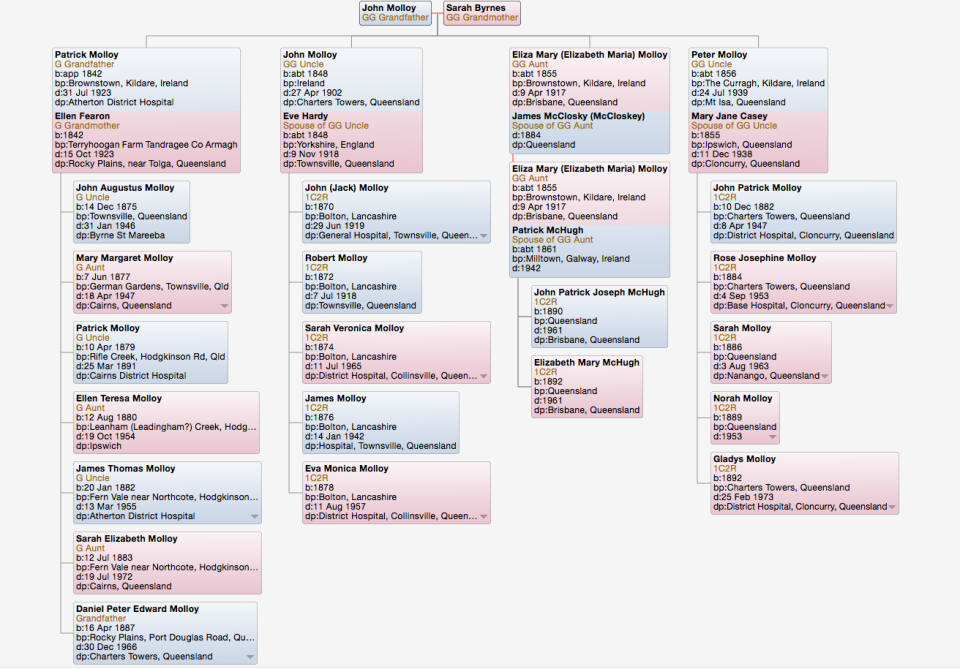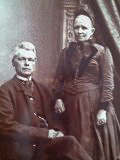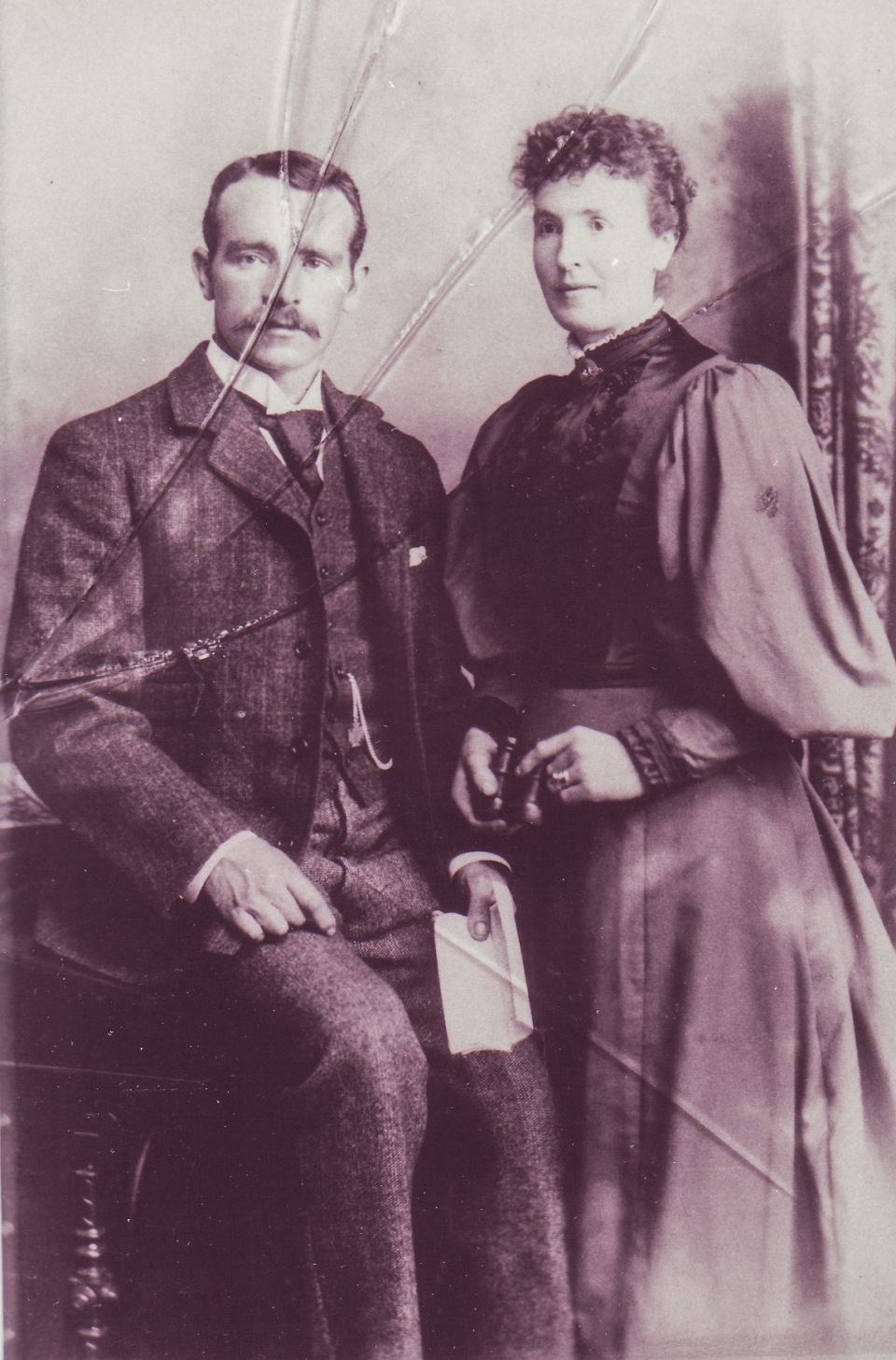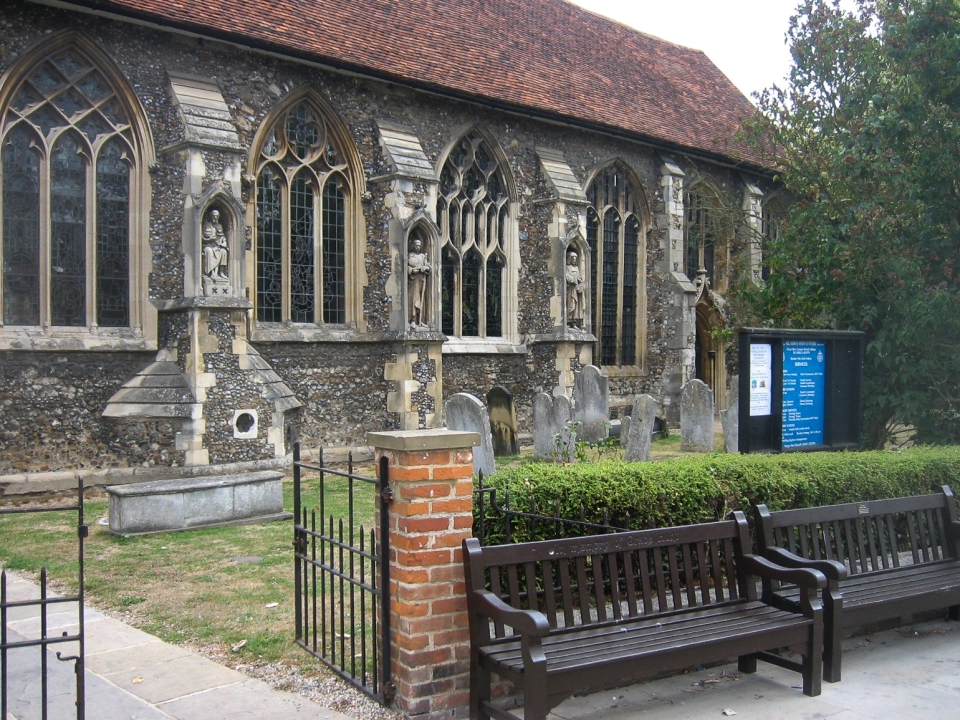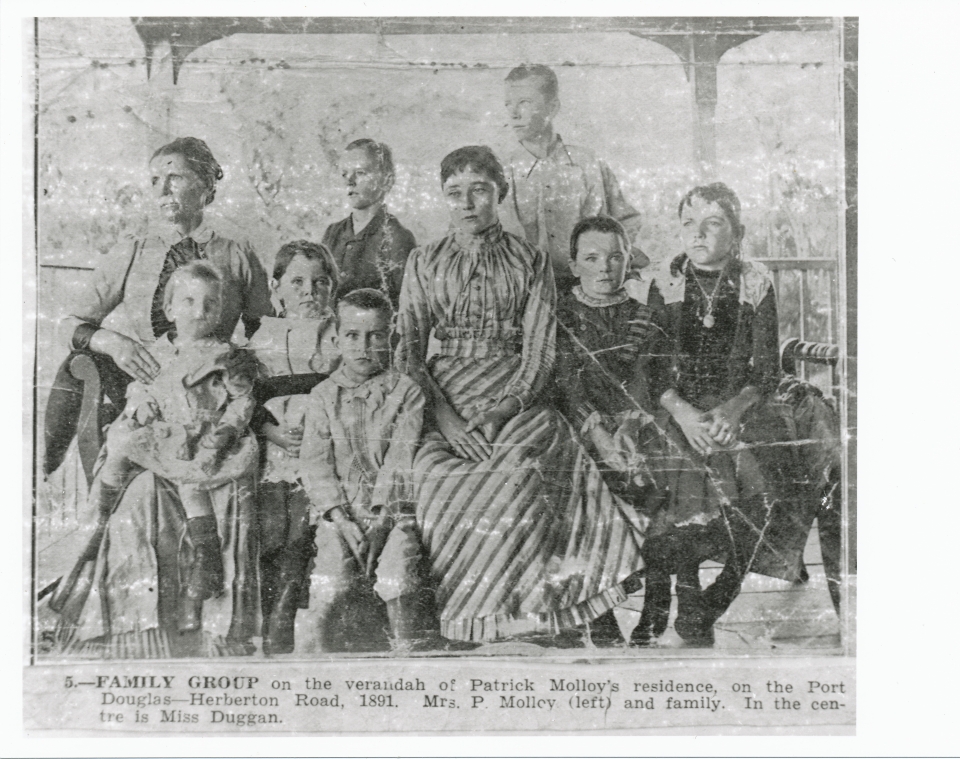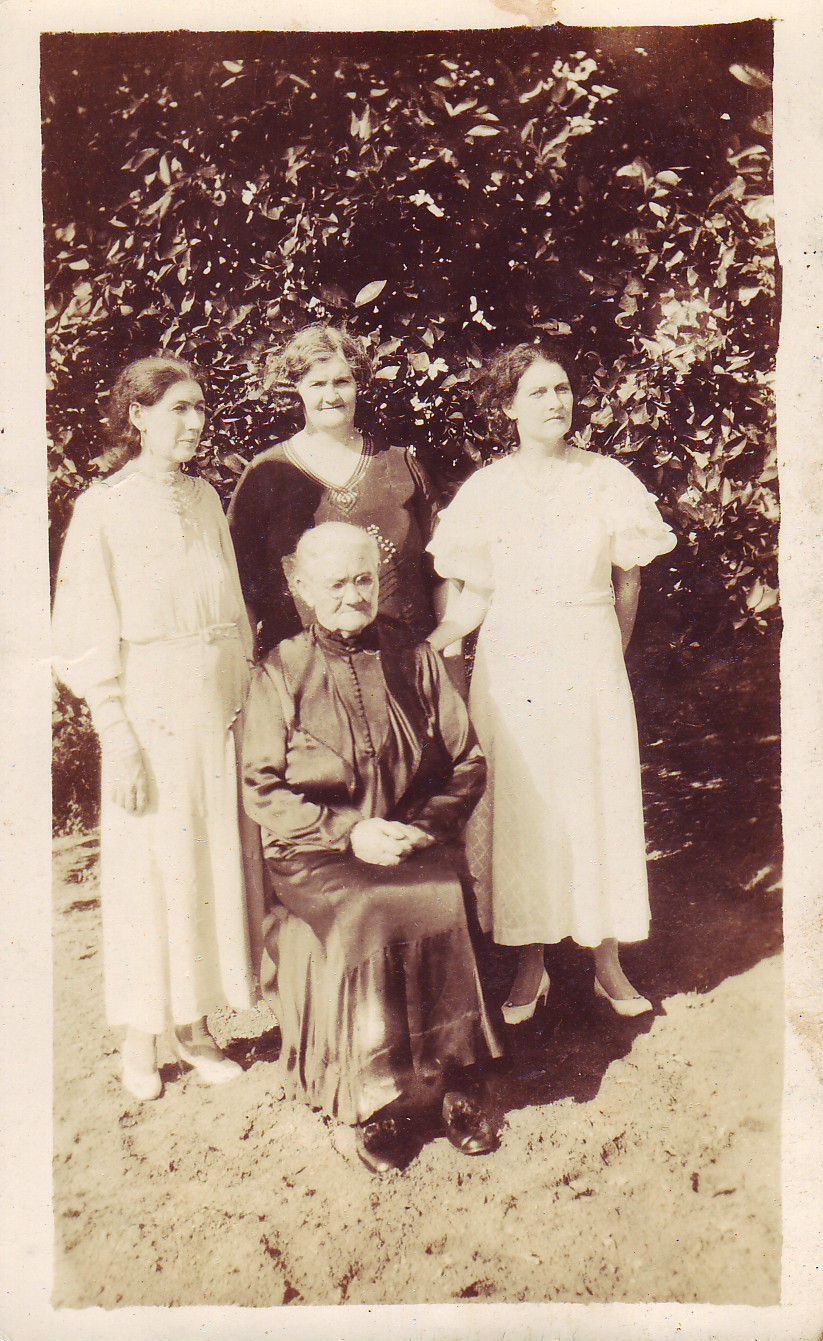A review of the occupations of the (male) Buchanans living in Ireland in the late 18th and 19th centuries shows a concentration of professions. Quite a few doctors, a couple of coroners, clerks in holy orders (of the Church of Ireland), stockbrokers and insurance agents, and military men and some whose occupation was ‘gentleman’ – occupations reflecting the generally middle class status of those descended from the Scottish arrivals in Ireland as part of the English-engineered “plantation of Ulster”.
The earliest known of the doctors was Dr. George Buchanan. He was born about 1740 in Fintona, Co. Tyrone, the son of Beaver Buchanan. On 11 March 1774 he married Ann Mullan, and they had 14 children, all but three surviving to early adulthood.
There were a number of typhus fever outbreaks in Ireland during the 19th century. According to Wikipedia, epidemic typhus is caused by a bacteria (Rickettsia prowazekii) and is spread by the human body louse. Outbreaks tend to occur during times of malnutrition and concentrated conditions of poor sanitation and hygiene. From Wikipedia:
A major epidemic occurred in Ireland between 1816 and 1819, during the famine caused by a world-wide reduction in temperature known as the Year Without a Summer.
This period of climate-change-induced famine is now thought to have been caused by the explosive eruptions of Mt Tambora volcano in April 1815, in Sumbawa Island in Indonesia, the largest eruption in over 1600 years, which sent large amounts of volcanic ash into the upper atmosphere and caused a temporary reduction in the average land temperature of 1 degree C, with consequent impact on largely subsistence agricultural societies around the world.
Many priests and ministers, doctors and others providing services to the sick and poor were amongst those who died [Hugh Fenning, Typhus Epidemic in Ireland 1817-1819: priests, ministers, doctors. Collectanea Hibernica No. 41 (1999)].
The journal The Patriot recorded on 22 September 1818, the death of …
in consequence of fever, caught in the discharge of his professional duties, Dr Buchanan, of Fintona, Co. Tyrone (father of Mr. William Buchanan, of Grafton St).
It is interesting that Dr Buchanan was still discharging his professional duties at the age of 78!
One of his sons was Bever Buchanan. The Buchanan book claims him to be the first president of the Apothecaries Hall of Ireland, in Dublin. Again from Wikipedia:
The Apothecaries’ Hall of Ireland is an association of apothecaries of Ireland, founded in 1791. The Apothecaries Hall was erected in Mary Street, Dublin, in 1791, at a cost of £6000. It contained a spacious chemical laboratory where medical articles were prepared. Part of it was a wholesale warehouse, where the apothecaries could procure their medicines. Lectures were delivered there. The principal duty of this society was the examination of candidates for the rank of master apothecary, without which no person could open an apothecary’s shop in the city. It could also confer medical students with a degree that enabled them to practice.
Surprisingly the right of the Apothecaries Hall to issue licences to practice medicine was not legally removed until an Act of Parliament in 1971, although it had long ceased to have that function. However our Bever Buchanan would have been only about 14 in 1791, so any association with the Hall would have come later.
In 1815 Bever Buchanan was practising as an apothecary at 80 Grafton St, Dublin. He died aged 38 on 2 July 1815 (pre-deceasing his father) according to his burial record in St Anne’s Church, Dublin. At the same time, there was also the burial of an infant son (probably also named Beaver). No information is available as to the cause of his death.
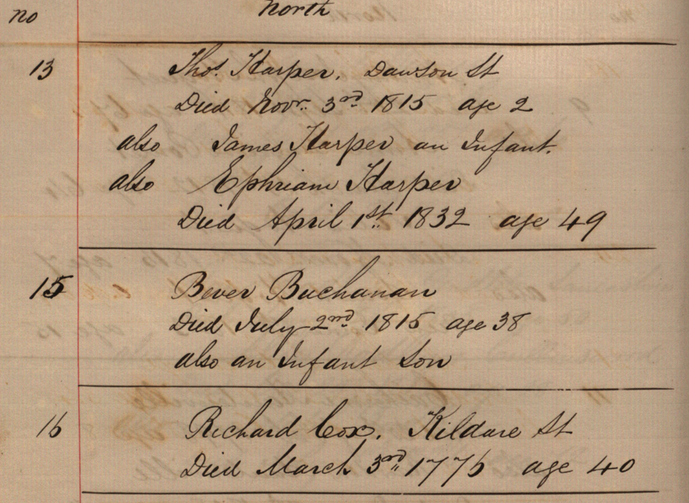
He had married Elinor Hodgson in 1795 and had five children. One of these children was another Dr George Buchanan.
This George Buchanan was born about 1800. In 1824 he was a physician in Warrenpoint, Co. Down and for 14 years he was the surgeon to the County Down Infirmary in Downpatrick. On 11 December, 1824 he married Anna Wright, daughter of Richard Wright of Dublin. The Westmeath Journal published the details of their marriage (23/12/1824):
On Saturday, the 11th inst. at Mary’s Church, by the Rev. Charles Bardin, George Buchanan, Esq., M.D. of Warrenpoint, to Anna, daughter of Richard Wright, Esq. of Lower Ormond Quay.
Like his namesake grandfather, he also died of typhus during the 1841 epidemic which swept through the country. He is buried in the Downpatrick Church of Ireland graveyard, with the following inscription:
Sacred to the memory of George Buchanan, M D , L R C S I , for fourteen years surgeon to the County of Down Infirmary who departed this life the 19th day of October A D 1841 aged 41 years
(L.R.C.S.I. = Licentiate of the Royal College of Surgeons in Ireland)
In Ireland, typhus had appeared again in the late 1830s, although the major typhus epidemic did not occur until the Great Irish Famine between 1846 and 1849. He and his wife had seven children, including the Rev. Charles Todd Buchanan, the father of Dr George Charles Buchanan, my father’s grandfather.
Amongst other medicos in other branches of the family were:
- Robert Buchanan, another son of Dr George Buchanan (1740 – 1818) of Fintona, a younger brother to Bever Buchanan, the apothecary.
He was born in approximately 1787. The Buchanan Book records him as being a physician and surgeon to the Royal Scots Greys, a cavalry regiment of the British army, and as residing at Pontefract Castle in Yorkshire, but as this castle has been in ruins since the English civil wars of the 17th century, it can’t be correct. However he did live in the town of Pontefract.
He obtained his medical qualifications at the University of Edinburgh, studying over five non-consecutive years from 1810 to 1820 and graduating M.D. in 1820. At that time the university’s medical faculty was regarded as one of the best in Europe and many graduates subsequently established medical faculties at other universities around the world, including at the University of Sydney. He graduated as Robertus Buchanan, Anglus. de Scarlatina – ‘Anglus’ identifies him as English in spite of being born in Ireland (Hiburnus). De scarlatina – denotes a thesis on scarlet fever?
Before he graduated, he had married in 1814 Sophia Theresa Wharrey of Selby, Yorkshire, and had had two children, Robert born 1816, also a doctor, and Eliza, born 1817, who married a surgeon. His first marriage notice (Leeds Mercury):
On Thursday se’nnight at St Andrew’s, Canterbury, Robert Buchanan, Esq. to Sophia Theresa, youngest daughter of the late Morley Wharrey, Esq. of Selby.
Sophia died in 1817, and Robert remarried in 1822, in Edinburgh. His second marriage notice (The Scots Magazine):
Marriage at Leith, 18th inst. Robert Buchanan M.D. to Ellen, eldest daughter of Capt Robert Fraser and neice and co-heiress of the late Major William Fraser of the Hon. East India Company’s service
He and second wife Ellen had seven children. All children of both marriages were born in Yorkshire, and while he was living in South Leith, Edinburgh at the time of his second marriage, his time in Scotland and perhaps his connection with the Scots Greys appears to have been limited. The Scots Greys were involved in the Battle of Waterloo in 1815, but otherwise were not engaged in other conflicts until the Crimean War in 1856.
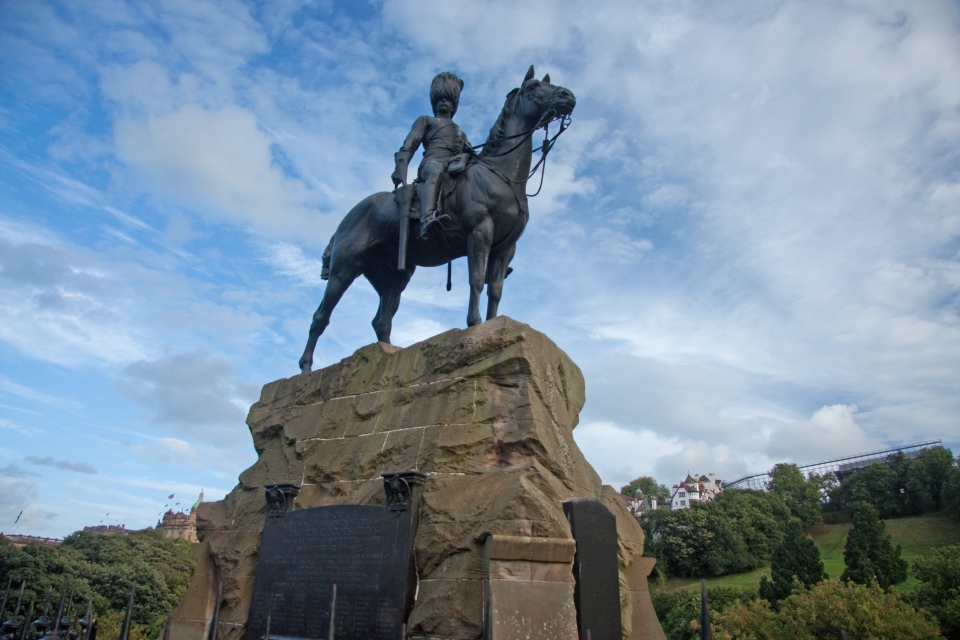
Memorial statue for the Royal Scots Greys, Princes St, Edinburgh (2010) – officially at the time, the 2nd Dragoons (Royal Scots Greys)
The family was living in Featherstone, Yorkshire from 1823, then in Pontefract, Yorkshire for most of his career. His wife Ellen died in 1860 in Yorkshire. From the 1861 census he is recorded as living in London, Middlesex. His final address when he died in London in 1872, aged 84, was 2 St Leonard’s Villas, Bloomfield Rd, Maida Hill, London, Middlesex.
- Stanley Buchanan: a grandson of Bever Buchanan, through his son William. He married Sarah Hare in Dublin in January 1846, and was living in Newport in South Wales at the time of the census in 1851. He died in July 1851 at the age of 29 and is buried at St Woolos, Newport, Monmouthshire. There appear to have been two children born in Wales. His wife Sarah remarried in Dublin in 1853 to a William F Buchanan (I’m yet to determine if he is from the same family).
- John Robert Hamilton, M.D.: a son of Emily Buchanan, a grand-daughter of Dr George Buchanan of Fintona (1740 – 1818), through his son James.
Emily had married on 15th June 1852 to John Eccles Hamilton, a surgeon:
In Fintona Church, on Tuesday week, by the Rev. Thomas Maunsell, JOHN ECCLES HAMILTON, ESQ., Surgeon, R.N., to EMILY, second daughter of JAMES BUCHANAN, ESQ., Fintona
John Robert Hamilton was born in 1857 but died in 1883 in Londonderry at the age of 25, so his medical career would have been short-lived.
- Dr. Alfred James (Bruce) Hamilton, another son of Emily Buchanan and John Eccles Hamilton, migrated to Tasmania and was practising from at least 1898, principally in Queenstown and later Penguin. He is listed in the Tasmanian Post Office Directory for 1904 with the following qualifications:
Hamilton Alfred .James L.R.C.P. & L.R.C.S. Edin. 1887, L.F.P.S. Glas. 1887; Queenstown
(ie licensed by the Royal College of Physicians and Surgeons at Edinburgh, and a Licentiate of the Faculty of Physicians and Surgeons, Glasgow)
The Tasmanian newspapers of the era provide occasional reports where he acts as a medical witness, as in the following case:
The Mercury (Hobart) 12 February 1898
SCOTTSDALE.
On the 7th inst., before the Hon. C. O’Reilly, Coroner, an inquest was held on the body of Dr. E. Jas. Cheetham, who was found dead. …. Dr. Alfred James Hamilton, legal qualified practitionor, Derby, gave corroborative evidence, and the jury returned a verdict that the deceased died from using alcohol and narcotic poison, administered by himself.
The U.K. Medical Register for 1927 records him as being at Strahan, Tasmania. Alfred James Hamilton was born in 1861 in Ireland. He married in 1898 in Melbourne to Victoria Alice Geoghegan, also born in Ireland, and died aged 75 at Penguin, Tasmania.
Advocate (Burnie, Tas) 25 August 1936
HAMILTON.-On August 24, at his late residence, Penguin, Dr. Alfred James (Bruce) Hamilton, beloved husband of Alice Hamilton, and eldest son of the late John Eccles Hamilton, Surgeon, R.N., of Omagh, County Tyrone.
I


